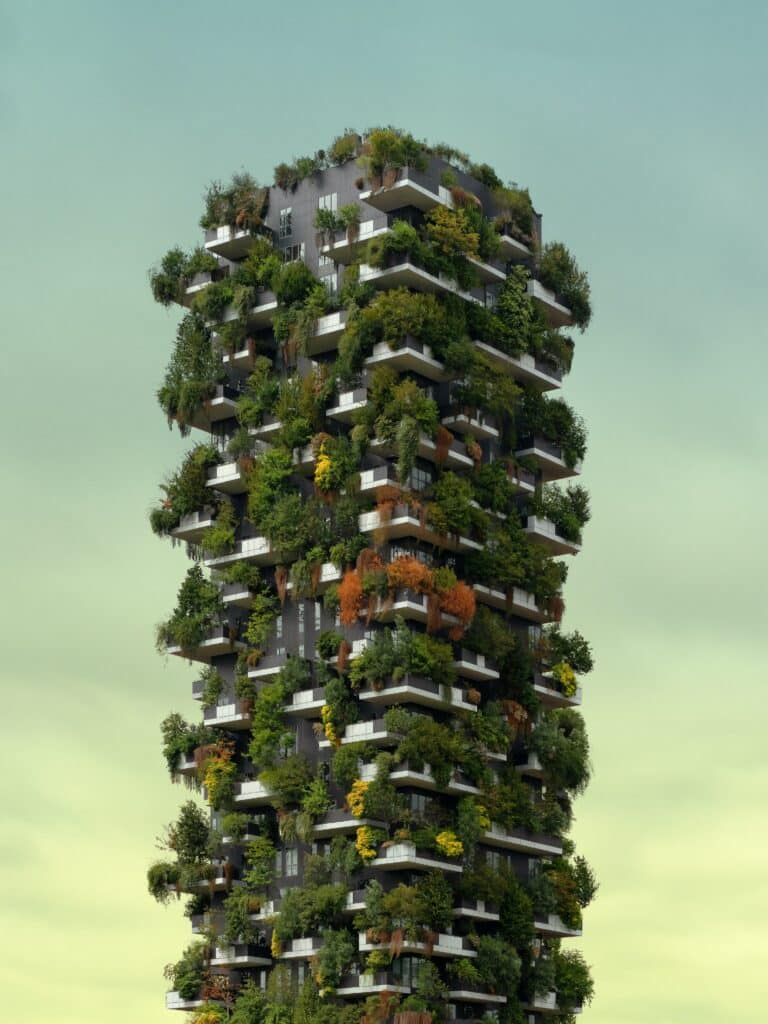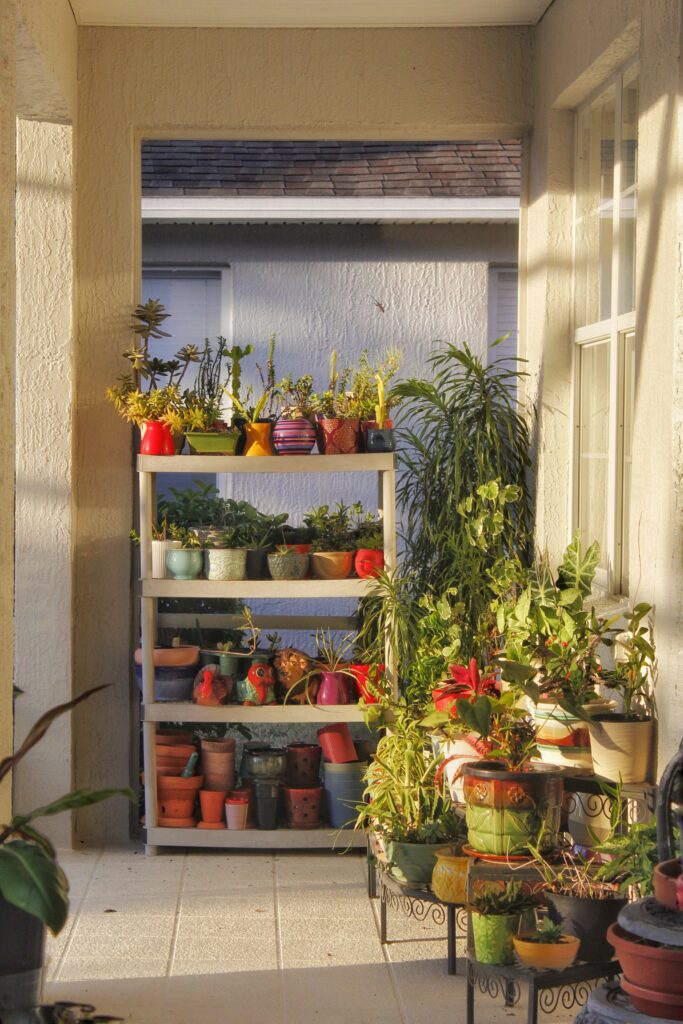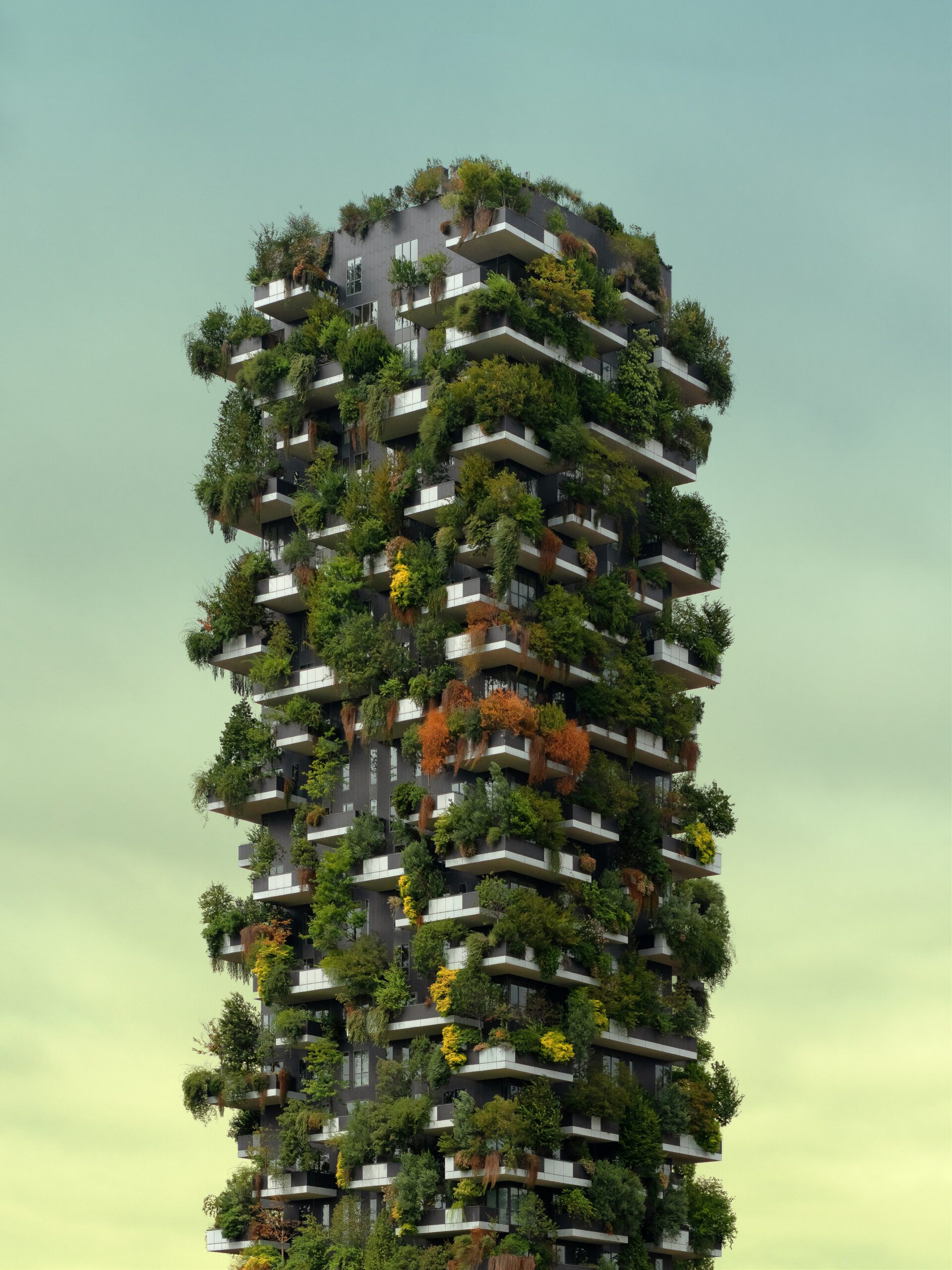Anúncios
However, the desire to have a personal oasis doesn’t have to succumb to the challenges of limited square footage or the constraints of rental agreements. This is where the concept of vertical gardening comes into play, a novel approach to traditional gardening that encourages plants to “grow up, not out”.

In this enlightening exploration, we delve into innovative vertical garden ideas that will transform your living spaces, regardless of their size or rental stipulations. Expect a greener journey, punctuated by ideas that are not only space-saving but also strikingly beautiful. From your living room walls to your kitchen corners, these green solutions will breathe new life into your living spaces.
Anúncios
Whether you’re a seasoned gardener looking for fresh inspiration or a green thumb beginner eager to dive into the world of vertical gardening, this exploration will offer unique insights and practical tips. The focus is on creating green spaces that are not only aesthetically pleasing but also easy to maintain, fostering an environment that is both refreshing and therapeutic.
So, are you ready to defy the odds and transform your rental property into a lush green haven? Keep scrolling to discover a variety of vertical garden ideas that cater to different tastes, preferences, and space constraints. Let’s reinvent the meaning of gardening, one vertical space at a time.
Anúncios
Understanding Vertical Gardening
Vertical gardening is a revolutionary method of cultivation that maximizes the use of vertical space to grow plants. As the name suggests, instead of spreading out horizontally, plants are encouraged to climb up structures, walls, or custom-made garden panels. This technique has gained popularity in recent years, particularly amongst urban dwellers and renters who have limited outdoor space.
From an engineering perspective, the concept of vertical gardening is a testament to human ingenuity and the efficient use of space. Think of it as a skyscraper, but for plants. The principle is the same: going upwards instead of expanding outwards. However, the technical aspects of creating a successful vertical garden require more than just hanging pots on a wall. Understanding the fundamentals of irrigation, sunlight exposure, and plant selection are key.
The Mechanics of Vertical Gardening
The process of setting up a vertical garden involves more than just aesthetic considerations. The technical aspects are equally, if not more, important.
Irrigation is one of the most critical components. It must be carefully designed to ensure that all plants receive an adequate amount of water. Drip irrigation systems or self-watering planters are commonly used to provide consistent moisture.
Another crucial factor is sunlight. Plants need a certain amount of light to photosynthesize effectively. The positioning of the garden should be such that it maximizes the natural light available, keeping in mind that not all plants have the same sunlight requirements.
Selecting the Right Plants for Vertical Gardens
Choosing the appropriate plant species is one of the most critical and foundational aspects of creating a successful and thriving vertical garden. Since not all plants are well-suited for vertical cultivation, careful consideration must be given to selecting varieties that can flourish in the unique growing conditions of a vertically-oriented system. Ideally, these plants should either have a natural tendency to grow upward, exhibit trailing or climbing habits, or be easily adaptable and trainable to vertical structures such as trellises, lattice frameworks, wall-mounted planters, or stacked containers.
Vegetables and Herbs
Edible plants, particularly vegetables and culinary herbs, are among the most popular and practical selections for vertical gardening. Their compact growth patterns and high yield in limited space make them especially well-suited for this method of cultivation. For example, pole beans and peas thrive when provided with support to climb, making them ideal candidates for vertical trellising. Tomatoes—particularly indeterminate varieties—are another excellent choice, as they can be trained to ascend a stake or cage. Cucumbers, especially the vining types, also perform remarkably well when allowed to grow vertically, which improves air circulation and minimizes soil-borne disease.
In addition, a wide range of aromatic herbs can be successfully cultivated in vertical gardens. Basil, mint, parsley, cilantro, thyme, oregano, and rosemary are not only flavorful and fragrant but also thrive in small spaces, making them perfect for containerized or modular vertical setups. These herbs provide both culinary utility and sensory pleasure, offering a continuous source of fresh ingredients for cooking while enhancing the garden’s aroma and overall ambiance.
Ornamental Plants and Flowers
For gardeners who wish to prioritize aesthetics and visual impact, there is an abundance of ornamental plants and flowering species that adapt beautifully to vertical arrangements. Climbing plants such as English ivy, climbing roses, honeysuckle, and clematis can be used to form cascading green walls or colorful floral tapestries. These species are naturally inclined to ascend and cover surfaces, creating a lush, textured appearance that softens architectural elements and adds a touch of elegance to any space.
Moreover, flowering plants like petunias, geraniums, marigolds, impatiens, and nasturtiums offer vibrant bursts of color and seasonal beauty. These blooms can be arranged in a variety of ways to create eye-catching patterns, attract pollinators such as bees and butterflies, and bring life to otherwise bare walls or fences. The use of flowering ornamentals in vertical gardens not only enhances the visual appeal of the area but also contributes to biodiversity and ecological balance in the surrounding environment.
Creating a Vertical Garden Structure
Designing and building the structural foundation for your vertical garden is an essential step that significantly influences both the functionality and visual appeal of your green space. The complexity of the structure can vary widely, ranging from simple do-it-yourself (DIY) solutions to more elaborate, custom-built systems. Factors such as available space, overall budget, climate conditions, and personal craftsmanship skills all play a role in determining the most suitable structure. Whether you’re working with a tiny balcony, a backyard wall, or an interior living room corner, there are countless creative and practical ways to support vertical plant growth.
Trellises and Climbing Supports
Trellises and climbing supports represent one of the most accessible, versatile, and beginner-friendly options for constructing a vertical garden. These structures provide an upright framework that allows plants with climbing or vining tendencies to grow naturally and thrive. A wide variety of materials can be used to build trellises, including treated wood for a rustic or classic garden look, galvanized steel for a modern and industrial feel, or even recycled plastic for a lightweight, weather-resistant alternative. Some trellises are freestanding, while others can be attached directly to walls, fences, or planter boxes.
In addition to traditional flat trellises, gardeners may consider obelisks, arbors, and lattice panels as climbing aids. These vertical elements not only support plant growth but also contribute to the garden’s architectural charm. They are ideal for supporting species such as morning glories, sweet peas, passionflowers, and climbing vegetables like beans and cucumbers. Installing these supports early in the growing process ensures that the plants will have proper guidance and room to ascend as they mature.
Pallets
Transforming wooden pallets into vertical gardening structures is an innovative, cost-effective, and eco-conscious approach that has gained immense popularity among DIY enthusiasts and sustainable gardeners. Repurposed pallets offer a ready-made framework that can be easily modified to accommodate a wide range of plant types. The horizontal slats provide natural spacing for planting pockets, which can be used to hold small pots, planting containers, or even soil-filled fabric pouches.
To convert a standard pallet into a vertical garden, the openings between the slats can be lined with landscape fabric or breathable mesh, creating self-contained planting compartments. These sections can then be filled with potting soil and used to grow herbs, succulents, lettuces, and even small flowering plants. When secured against a wall or fence, a pallet garden becomes both a functional growing space and an attractive living display. For enhanced durability, it’s recommended to sand and treat the wood to resist weather damage and prolong the structure’s lifespan.
Pallet gardens are particularly useful in urban environments where floor space is scarce, such as on apartment balconies or rooftop patios. Their modular nature allows for customization, easy mobility, and creative arrangement, making them an ideal solution for renters or individuals looking to experiment with vertical gardening without permanent installations.
Green Walls
For a more advanced approach, you can create a green wall using a prefabricated panel system. These systems typically include a frame, a layer of fabric, and a watering system, and they can accommodate a large number of plants.
Advantages of Vertical Gardening
The advantages of vertical gardening extend far beyond merely maximizing limited space. This innovative gardening method offers a wide range of practical, environmental, and aesthetic benefits that make it an attractive option for both urban dwellers and suburban homeowners alike. In addition to its impressive space-saving capabilities, vertical gardening can contribute to enhanced air quality, mitigate the effects of noise pollution, and serve as a reliable, accessible source of fresh, organically grown produce right from the comfort of your home.
Improved Air Quality
One of the most significant environmental benefits of vertical gardening is its ability to enhance air quality within indoor and outdoor spaces. Plants serve as natural, eco-friendly air filtration systems. Through the process of photosynthesis, they absorb carbon dioxide from the atmosphere and release life-sustaining oxygen, contributing to a healthier breathing environment. Furthermore, many plant species are highly effective at trapping airborne dust particles, toxic chemicals, and volatile organic compounds (VOCs), which are commonly emitted by household products and industrial pollution. This natural filtration system not only purifies the surrounding air but also creates a fresher, cleaner, and more invigorating atmosphere, promoting overall wellness and respiratory health.
Noise Reduction
It may come as a surprise to many, but vertical gardens also play a role in minimizing unwanted ambient noise. The combination of lush plant foliage and the supportive garden structures can absorb, dampen, and deflect intrusive sound waves, thus functioning as a natural acoustic buffer. This sound insulation capability is especially beneficial in densely populated urban environments, where external noise from traffic, construction, and neighboring buildings can be overwhelming. By creating a vertical wall of greenery, homeowners and apartment residents can enjoy a more peaceful, serene, and tranquil living environment, enhancing both mental clarity and relaxation. Whether installed indoors or on balconies, patios, and rooftops, vertical gardens contribute significantly to the reduction of auditory distractions, fostering a calm and harmonious atmosphere.
Home-grown Produce
If you choose to grow vegetables and herbs, a vertical garden can provide a regular supply of fresh, organic produce, promoting healthier eating habits.
Wrapping It Up: Tips for Vertical Garden Maintenance
Maintaining a vertical garden does require some effort, but the results are well worth it. Here are some tips:
- Regular watering is crucial. Make sure to adjust the watering schedule according to the weather and the plants’ needs.
- Prune the plants regularly to maintain their shape and health.
- Monitor the plants for signs of pests and diseases. Early detection can prevent major problems down the line.
- Fertilize the plants regularly to ensure they get the necessary nutrients.
Vertical gardening is an innovative and rewarding way to transform your living space. Whether you’re a renter with limited space or simply someone looking for a green solution, vertical gardening offers a practical and beautiful way to bring nature into your home.

Conclusion
In conclusion, the concept of “Grow Up, Not Out: Space-Saving Vertical Garden Ideas for Renters – Transform Your Living Space with These Innovative Green Solutions!” offers creative and effective solutions for city dwellers with limited space. Utilizing vertical spaces, walls, and balconies not only brings a touch of greenery and natural beauty into your living space but also contributes to improving air quality and mental wellbeing. These innovative green solutions are not just aesthetically pleasing but also economical and practical, allowing even the busiest urbanite to maintain a garden.
As the article suggests, vertical gardens are not just about plants; they’re about transforming our living spaces and lifestyles. They promote sustainable living, reducing carbon footprint, and most importantly, rekindling our lost connection with nature. While the challenges of urban living are real, these vertical garden ideas for renters show that a lack of space should not hinder our ability to enjoy the benefits of gardening.
Remember, gardening is not just for those with sprawling backyards. With the right resources and ideas, anyone can cultivate their green thumb. So, renters, take heart and get creative with your vertical space. Embrace the concept of growing up, not out, and let these innovative green solutions transform your living space into a lush, green oasis.

